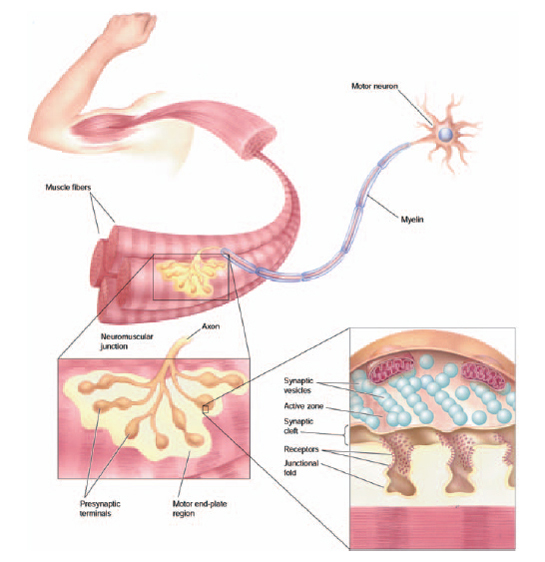Muscular SystemMuscle Function |
What is myasthenia gravis? |
Myasthenia gravis, which usually begins in the face, is a muscular weakness not accompanied by atrophy. It is a chronic, progressive autoimmune disease resulting from the destruction of acetylcholine receptors in the neuromuscular junction. Abnormal antibodies that bind to and destroy acetylcholine receptors can be identified in many people who have myasthenia gravis. Because of the decrease in the number of acetylcholine receptors, the efficiency of neuronal stimulation of muscle fibers decreases, and the muscle is weaker as a result.

The neuromuscular junction is where nerves connect to muscle. (Bear, Mark F., Connors, Barry W., and Paradiso, Michael A. Neuroscience: Exploring the Brain. 2nd Ed. Philadelphia: Lippincott, Williams & Wilkins, 2001.)
